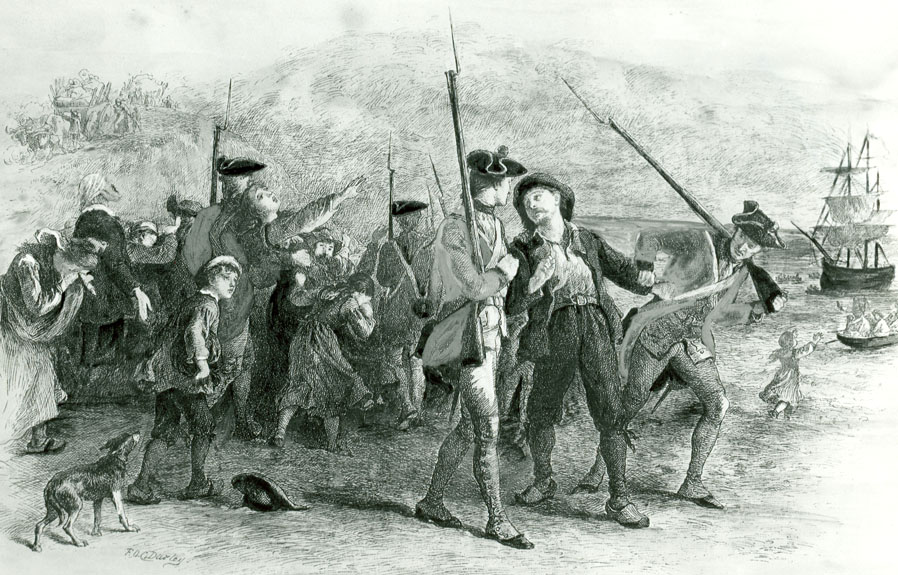
The Acadian Expulsion
Known by many different names, the Great Upheaval, the Great Expulsion, the Great Deportation, and Le Grand Dérangement.
Settlers of Port Royal Area
The first French settlers of Port Royal arrived in 1636. They constructed dykes with aboiteaus on the saltmarshes along the Annapolis River, then known as the Rivére au Dauphin. With fruitful farmsteads and good relations with the Mi’kMaq natives the settlers thrived. New generations of settlers started to settle around the Bay of Fundy and throughout Acadia, now Nova Scotia, New Brunswick and Prince Edward Island.
Port Royal area.
Port Royal area settlements stretched from The Basin of Annapolis River to the village of Paradise. The fort and area of Port Royal endured a century and a half of conflict between the French and English. The final siege of the fort at Port Royal occurred in 1710. The loss to the English resulted in the Treaty of Utrecht in 1713 and Acadia became British property.
In the following years the Acadians remained on their lands, farming, left alone by the English. Eventually the Acadians were made to swear their allegiance to the British Crown. Their unwillingness to sign the unconditional oath lead to their exile in 1755.
Between November 14th and 17th, late in the sailing season, five transport ships reached Annapolis Royal. A sixth ship, the Pembroke, was feared lost but arrived in time (Dunn 2004, 205).
Seven to eight weeks after the deportations from Chignecto, Grand-Pré and Pisiquid, 1664 Acadian men, women and children, were rounded up from the Port Royal area. Leaving all of their belongings behind, they were loaded onto the six ships from the Queen’s Wharf at the Annapolis Royal Fort (Dunn 2004, 205).
The ships waited, moored at Goat Island. At 5am on December 8th, 1755 the six ships sailed south to the British colonies escorted by the sloop-o-war Baltimore. (Dunn 2004, 205).
Captain Adams from Annapolis Royal to John Winslow at Halifax, dated December 8th, 1755: "This morning at 5 the fleet sailed out of the basin with a fair wind."
A Fleet of Seven Ships
The Journal of Captain John Knox, gave the breakdown of the number of Acadians on each ship as follows:
Voyage South
The convoy of seven ships escorted by sloop Baltimore, sailed south the morning of December 8th, 1755. The 6 transports that the Baltimore escorted carried an average of 278 Acadian exiles each. This is in contrast to the average of 167 per transport that was carried off in October, 1755. (Gipson, 269) The map below shows an approximate route of each ship. Soon after departure the convoy encountered a storm changing the course for several of the ships.
Deported Families
A reconstituted list of families whose presence on the ships is certain for some, and probable for others The list was put together from several sources and is a work in progress as more information is discovered.
After the Expulsion
Acadians from the Port Royal area were dispersed throughout the southern British colonies from Massachusetts to South Carolina. Deportations and expulsions of the Acadians would last until 1764. For those that survived the crowded ships, an uneasy life awaited most of them ashore. Some settled in Mississippi, and became known as the Cajuns. Many tried to head North back to Acadia but few succeeded, as the land was closely watched by the British. Those that eventually retuned found their homesteads resettled by the British and were forced to settle on the extremities of the province.
Interested in finding out more about Annapolis County? Explore these StoryMaps:
